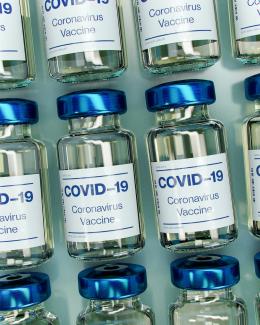
Market Recap - November 2021
Alphabet soup
A sharp acceleration in economic growth, increasing worries about inflation, a reluctant-to-act-against-inflation Fed, and a strong stock market were quickly displaced by news of a new Covid variant on Black Friday.
Table 2: Key Index Returns
|
|
MTD % |
YTD % |
|
Dow Jones Industrial Average |
-3.7 |
12.7 |
|
NASDAQ Composite |
0.3 |
20.6 |
|
S&P 500 Index |
-0.8 |
21.6 |
|
Russell 2000 Index |
-4.3 |
11.3 |
|
MSCI World ex-USA** |
-4.8 |
4.9 |
|
MSCI Emerging Markets** |
-4.1 |
-6.1 |
|
Bloomberg US Agg Total Return |
0.3 |
-1.3 |
Source: Wall Street Journal, MSCI.com, MarketWatch, Bloomberg
MTD returns: Oct 29, 2021-Nov 30, 2021
YTD returns: Dec 31, 2020-Nov 30, 2021
*Annualized
**in US dollars
Dubbed Omicron and labeled [a variant of concern by the World Health Organization, the just-named variant first spotted in South Africa sent shudders through global markets on Black Friday [https://www.cnbc.com/2021/11/26/who-labels-newly-identified-covid-strain-as-omicron-says-its-a-variant-of-concern.html]. Of course, it is not the first variant to trouble the world. Covid cases have spiked with the highly contagious Delta variant already [https://www.cdc.gov/coronavirus/2019-ncov/variants/variant-info.html]. The Alpha variant spread into the U.S. early in the year but is of less concern today. The Beta, Gamma, Epsilon, Eta, Lambda, Mu and other variants have not caused much concern among investors amid the growing use of vaccines and therapeutics.
This is critically important to the economy and investors, as these tools have been used in place of economically destructive lockdowns and social distancing restrictions. It’s not that they eliminate all danger of infection completely. They don’t. But lockdowns and various restrictions had been the preferred tool for government officials. That said, Omicron is a not-so-subtle reminder that the ever-changing pandemic remains a health threat. And the recent market volatility stems from worries over the new variant’s unknown impact on the global and U.S. economy.
That volatility appears to be brought on by its apparent ease of transmission and anxieties that current vaccines [https://www.reuters.com/business/healthcare-pharmaceuticals/moderna-ceo-says-vaccines-likely-less-effective-against-omicron-ft-2021-11-30/] and therapeutics [https://www.wsj.com/articles/covid-19-antibody-drugs-are-challenged-by-omicron-preliminary-testing-indicates-11638270003] may be less effective against Omicron. But early reports suggest milder symptoms [https://www.cnbc.com/2021/11/29/omicron-covid-variant-symptoms-heres-what-we-know-so-far.html].
However, I must stress that these are early reports, and little is known about the new variant. Perhaps, the latest volatility could subside if additional bad news isn’t forthcoming, or updates to vaccines and treatments prove to be effective.
Let me also add that FedSpeak at the end of November intensified selling. “At this point, the economy is very strong and inflationary pressures are higher, and it is therefore appropriate in my view to consider wrapping up the taper of our asset purchases... perhaps a few months sooner,” Fed Chief Jerome Powell said November 30 before a Senate committee. In early November, the Fed said it would begin tapering its $120 billion in monthly bond purchases by $15 billion per month in November and again in December. Economic conditions would dictate the pace in 2022.
Though inflation has been stubbornly high, the Fed has been slow to react. As we enter December, Powell has opened the door to a faster taper, which could advance the Fed’s timing of its first rate hike.
I trust you’ve found this review to be educational and helpful. Once again, let me gently remind you that before making decisions that may impact your taxes, you may want to consult with your tax advisor. If you have any questions or would like to discuss any matters, please feel free to give me or any of my team members a call.

